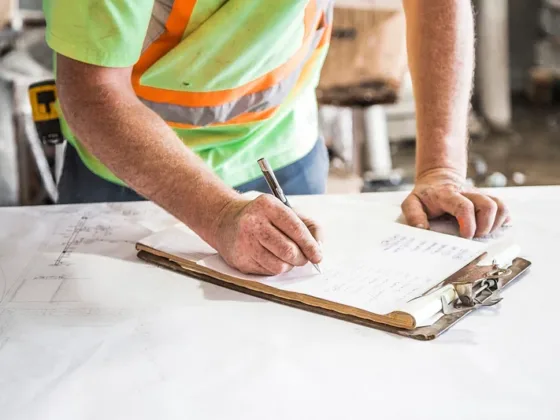Table of Contents Show
Are you considering installing a rooftop AC unit to keep your home comfortable during those scorching summer days? You’ve come to the right place! Rooftop air conditioning units can be an efficient and space-saving solution for your cooling needs.
However, choosing the right system and following proper installation guidelines for optimal performance is essential. In this ultimate guide, we’ll walk you through key considerations before making that decision, provide a step-by-step guide to rooftop AC unit installation, and share tips on maintenance and repairs.
Incidentally, if you’re looking for air conditioning installation in Fort Mohave, AZ, follow the link to a great HVAC provider that offers comprehensive HVAC services for all your needs.
Key Considerations Before Installing A Rooftop AC Unit
Before installing a rooftop AC unit, it’s important to ensure that you comply with all building regulations, obtain the necessary permits, and consider accessibility for installation and maintenance.
Read Also:
Choosing The Right Unit Size and Type
Choosing the right rooftop AC unit size and type is crucial to ensuring that your system efficiently cools your home. Before choosing a unit, consider the size of your living space and the number of rooms you want to cool.
An undersized unit won’t effectively accomplish its job, while an oversized one will waste energy and expense.
Various types of units are available on the market today, including single-package units or those that combine heating and cooling systems into one complete device.
Others offer modular flexibility with separate components for improved energy efficiency performance along with higher initial cost benefits over time.
Choose an option depending on your budget and preferences, but most importantly, ensure compliance with necessary codes for installation, such as proper sheet metal framing required by building safety standards.
Electrical Requirements
Before installing a rooftop AC unit, it’s crucial to consider the electrical requirements. To ensure proper functionality, the unit requires a dedicated electrical circuit with the correct voltage and amperage.
In addition, homeowners need to ensure that their building’s electrical system can support the new equipment. Upgrading your existing electrical panel may be necessary if it doesn’t meet the required capacity for your new AC unit.
Also, keep in mind that improper wiring or incorrect sizing of cables and wires can cause severe damage or even start a fire hazard.
Step-by-Step Guide to Rooftop AC Unit Installation
First, position the unit correctly on the rooftop and properly anchor it to prevent any movement or damage. Then, connect electrical and refrigerant lines according to manufacturer instructions.
Proper Positioning and Anchoring
Proper positioning and anchoring of your rooftop AC unit are crucial to ensuring it functions efficiently and safely. When choosing a location for the unit, you need to consider factors such as accessibility, clearance requirements, and potential obstructions like trees or power lines.
To anchor the unit properly, you’ll need to install a sheet metal frame that will support the weight of the unit and provide sufficient ventilation underneath. The frame should be secured firmly with bolts or screws into the roof deck or curb.
Keep in mind that building codes require minimum distances from roof edges, adjacent walls, and other rooftop equipment when installing your AC unit.
Connecting Electrical and Refrigerant Lines
Connecting electrical and refrigerant lines is a crucial step in installing your rooftop AC unit. It involves running copper pipes that carry the refrigerant between the outdoor condenser unit and the indoor evaporator coils and wiring that connects the components to power sources.
When connecting refrigerant lines, ensuring no leaks or kinks in the piping is important to prevent costly repair bills later on. Additionally, properly insulating these lines will help maintain the efficiency and longevity of indoor air quality equipment and ductwork systems over time.
When it comes to wiring connections, it’s best left to experienced electricians who know how to connect exposed wires properly while adhering strictly to electrical safety guidelines.
Testing And Commissioning the System
Once your rooftop AC unit is installed, testing and commissioning the system before relying on it for cooling is important. This involves checking that the electrical connections are secure and that all refrigerant lines are properly connected without leaks.
The HVAC technician will also confirm that the thermostat works correctly and set up any necessary programming or scheduling.
After successful testing, you can confidently begin using your new rooftop AC. However, keep in mind that regular maintenance and inspections are still crucial for ensuring optimal performance over time.
Maintenance And Repairs for Rooftop AC Units
Regular maintenance and repairs are crucial to keeping your rooftop AC unit running efficiently. This includes cleaning and replacing filters, inspecting electrical connections, lubricating moving parts, checking refrigerant levels, and addressing any issues promptly.
If you notice strange noises or reduced cooling performance, it’s best to call a professional HVAC technician for repairs before the problem worsens.
Regular Cleaning and Filter Replacement
Regular cleaning and filter replacement are the most important aspects of maintaining a rooftop AC unit. Over time, dust, dirt, and other debris can accumulate within the unit’s filters, causing them to become clogged and reducing efficiency.
This can cause your AC unit to work harder than necessary, resulting in higher energy bills.
To do this, turn off the system’s power supply and locate the air intake section on your rooftop AC unit. The filter should be easily accessible from there; simply remove it, clean it with a brush or vacuum cleaner depending on its type and condition, or replace it completely if need be – disposable filters need to be replaced more often as opposed to reusable ones, which can just be cleaned properly before reuse.
Troubleshooting Common Issues
Even with proper maintenance and regular check-ups, issues can arise with rooftop AC units. Some common problems include strange noises from the unit, water leaks around or inside the building, and inadequate cooling or heating.
If you notice any of these issues, it’s important to investigate them promptly. Strange noises can indicate a fan issue or loose parts that need tightening. Water leaks could be caused by clogged drain lines or faulty condensation pumps.
And inadequate cooling or heating may mean an issue with the refrigerant levels or thermostat settings.
Conclusion
In conclusion, installing a rooftop AC unit can be a challenging task if you don’t have the right knowledge and expertise. However, with this ultimate guide, we hope we have provided you with all the necessary information to make an informed decision about your installation project.
Remember to consider building regulations and permits, choose the right size and type of unit for your space, properly position and anchor the unit, connect electrical and refrigerant lines correctly, and commission the system thoroughly before use.
Regular maintenance of your rooftop AC unit will ensure it lasts longer while performing optimally; always clean filters regularly or change them as required.










